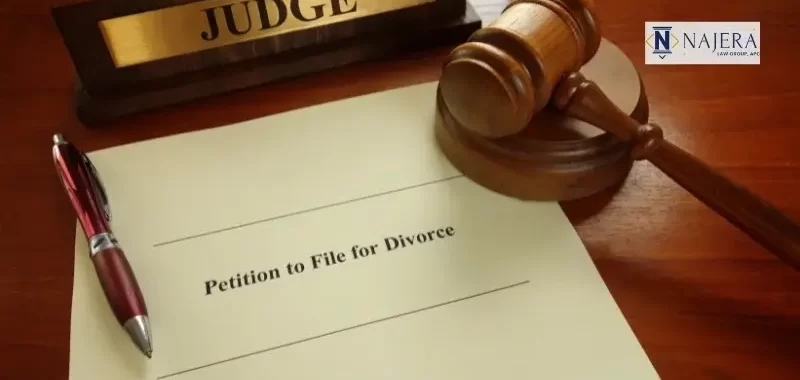|
|
Last Modified on Jan 10, 2025
Few legal issues are more complicated and emotional than divorce. Fortunately, if both parties agree on the key issues, the process can be much smoother. If you’re wondering how to file for divorce in California when both parties agree, it’s important to understand that California allows for uncontested divorce. This is typically a much faster and less costly route than being involved in a contested divorce battle.
The following steps can help you ensure you meet all legal requirements and finalize your uncontested divorce as efficiently as possible.
Step 1: Ensure You Meet California’s Residency Requirements
Before you officially file for divorce in California, at least one spouse is required to meet the state’s residency requirements. This means that:
- At least one spouse must have lived in California for six months before filing.
- The spouse who is filing must have lived in the county where they plan to file for at least three months.
It’s important to note that these residency requirements are non-negotiable. If neither spouse meets these requirements, you will need to wait until they are fulfilled. Couples who are no longer comfortable living together could get a legal separation during this period or simply live apart until the case is finalized.
Step 2: Prepare Necessary Divorce Forms
When it’s time to start the divorce process, the spouse who is initiating the divorce is required to complete and file a number of legal documents with the appropriate court. Because this is an uncontested divorce, the following forms will likely need to be completed:
- Petition for Dissolution of Marriage (FL-100): This form will formally start the divorce process. It outlines basic details needed in these cases, such as the date of the marriage, the date of separation, and whether there were any requests for spousal support or property division.
- Summons (FL-100): This notifies the other spouse of the divorce filing and provides important legal information about their rights and obligations.
- Disclosure forms: California requires that both spouses in a divorce need to exchange financial disclosures. This is to ensure transparency around each person’s financial status, including each other’s assets, debts, and income.
- Property declaration: If any marital property or debt is subject to division, there will be forms to complete that detail how marital assets and liabilities will be distributed upon the marriage’s termination.
Step 3: File and Serve the Divorce Papers
Once you have completed the forms, the petitioner must then file them with the Superior Court in the appropriate county. After you have officially filed, the court clerk will stamp the documents and return copies to you. Once these are in hand, California requires that the other spouse be officially notified of the proceedings. This is done through service of process, which means that the divorce papers need to be formally delivered to the other spouse.
Step 4: Draft and Sign a Marital Settlement Agreement
A marital settlement agreement is a legally binding document that outlines the specific terms of a divorce. It includes directions such as how assets and debts will be divided, what spousal support payments look like, details on child custody and visitation arrangements, and if child support payments are necessary. In uncontested divorces, couples are welcome to draft the agreements themselves or work with a mediator and lawyer to ensure all requirements are met.
Step 5: Submit Final Paperwork for Court Approval
Once all of the financial disclosures and the settlement agreement are complete, the petitioner must submit all of this final paperwork to the court. The judge will then review the documents to ensure everything is compliant and makes sense. If they agree with the decisions the couple has presented and believe everything else is in order, they will approve the judgment without needing a court hearing.
FAQs
Q: How Long Does It Take to Get a Divorce in California if Both Parties Agree?
A: Even when both parties agree on all details related to their divorce, California still requires them to wait for a mandatory six-month period before the divorce can be finalized. This waiting period will begin when the divorce papers are served to the respondent. If everything has been filed correctly, the divorce can be completed as soon as the waiting period ends. Any errors found in these forms could extend the timeline.
Q: Do I Need a Divorce Lawyer if We Agree on Everything?
A: If both spouses agree on all aspects of how the divorce should end, they should still consider hiring attorneys to avoid unnecessary complications. For instance, a divorce lawyer can help ensure all your forms are completed correctly. Without having their oversight, you could unnecessarily delay your case. In addition, while things might seem amicable at first, it’s still wise to have a lawyer supervise your case and combat any unexpected disputes if they arise.
Q: Do We Need to Appear in Court If We Both Agree on the Divorce?
A: In most cases, couples who agree on the terms of their divorce and submit the paperwork compliantly do not need to make a court appearance. Once the paperwork has been submitted, the judge will review the documents to ensure everything is in order before signing. If there are any errors, the court may request clarification before finalizing. This could require an in-person hearing. To avoid this, work with a divorce lawyer to ensure you have all papers in order.
Q: Can We Still File for an Uncontested Divorce If We Have Children?
A: Yes, simply having children together does not prevent a couple from filing for an uncontested divorce. As long as they both agree on details such as custody, visitation, and child support arrangements, they still have the right to pursue their divorce. However, the court will still review their proposed custody arrangements, as the court prioritizes the well-being of any children in question. They may request a modification before finalizing the order.
Contact Najera Law Group, APC, Today
If you and your spouse are looking to move forward with an uncontested divorce in California, contact our firm today. We would be honored to supervise the process and help you avoid any unnecessary risks that could delay your case.




